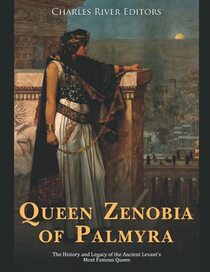Palmyra is an ancient Semitic city in the center of Syria. It became a subject of the Roman Empire in the first century, CE. However, it is a much older city-state, it is even mentioned in the Old Testament of the Bible. They were a rich community from their jobs as middlemen with trade caravans. They transported Eastern goods to the Roman Empire via the Silk Road.
Ethnically, they were from Amorites, Arameans, and Arabs. Because of their trading, they were conversant in Aramaic, Greek, and Latin. They were polytheistic, worshiping Semitic deities, Mesopotamian, and Arab gods (this is before Islam). Their culture was sophisticated, with elements from western and eastern influences.
They had a long history with Rome; their apex was about 260, CE, when their King Odaenathus defeated the Persian Emperor Shapur I. The king and his son were assassinated and he was succeeded by his wife and regent, Queen Zenobia. She rebelled against Rome and created the Palmyrene Empire. At its apex, it included central Anatolia to southern Egypt. But in 273, Roman emperor Aurelian destroyed the city. Records are sketchy but it is believed that Aurelian sent Zenobia to Rome with her children, to live a quiet life in exile.
The generous number of photos of Palmyra was really appreciated because ISIS has destroyed many of the ancient buildings and tombs (that the photos show). I knew nothing of this very interesting woman before reading this book about Palmyra and its audacious queen.
Ethnically, they were from Amorites, Arameans, and Arabs. Because of their trading, they were conversant in Aramaic, Greek, and Latin. They were polytheistic, worshiping Semitic deities, Mesopotamian, and Arab gods (this is before Islam). Their culture was sophisticated, with elements from western and eastern influences.
They had a long history with Rome; their apex was about 260, CE, when their King Odaenathus defeated the Persian Emperor Shapur I. The king and his son were assassinated and he was succeeded by his wife and regent, Queen Zenobia. She rebelled against Rome and created the Palmyrene Empire. At its apex, it included central Anatolia to southern Egypt. But in 273, Roman emperor Aurelian destroyed the city. Records are sketchy but it is believed that Aurelian sent Zenobia to Rome with her children, to live a quiet life in exile.
The generous number of photos of Palmyra was really appreciated because ISIS has destroyed many of the ancient buildings and tombs (that the photos show). I knew nothing of this very interesting woman before reading this book about Palmyra and its audacious queen.




